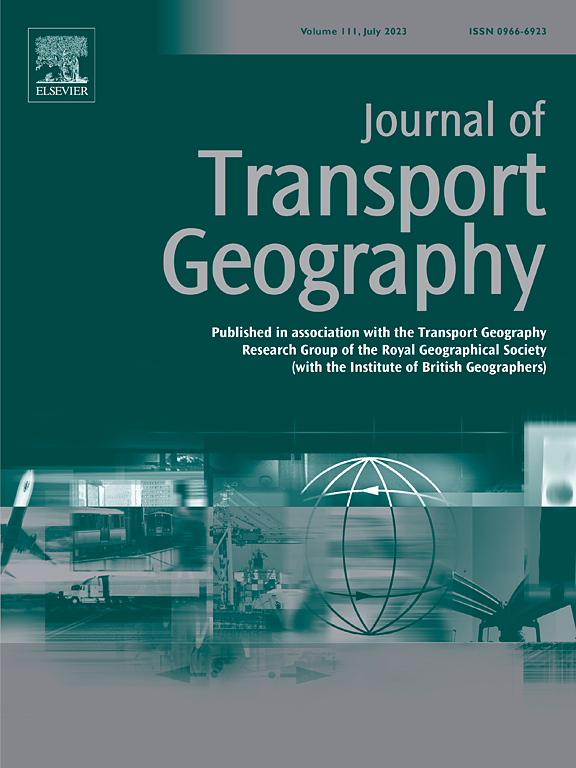公共汽车站候车亭的可用性和数量的社会排他性模式
IF 5.7
2区 工程技术
Q1 ECONOMICS
引用次数: 0
摘要
公交车站候车亭在提供公共交通方面发挥着重要作用。然而,在文献中,为公共汽车站分配庇护所所采用的标准的广泛影响尚未得到充分探讨。本文通过负二项logit障碍模型,全面分析了巴西本文章由计算机程序翻译,如有差异,请以英文原文为准。
Socially exclusive patterns in the availability and number of bus stop shelters
Bus stop shelters play a fundamental role in providing access to public transport. However, the broad impacts of adopted criteria for assigning shelters to bus stops have been underexplored in the literature. This paper provides a comprehensive analysis of how bus stop shelters have been distributed in São Paulo (Brazil), investigating the impact of 23 socioeconomic, land use and transport system factors on the presence and number of stop shelters in 20,988 bus stops through a negative binomial logit hurdle model. Results showed that bus stops on arterial roads, served by multiple lines and higher-frequency lines, surrounded by schools, higher-income and sparsely populated areas tend to have more shelters. Transport system features were consistently related to the presence and number of bus shelters, whereas socioeconomic features had a higher share of participation in the availability of a stop shelter, and land use variables in the occurrence of multiple shelters. The paper adds to the literature the characterization of socio-spatial patterns, which are statistically associated with the distribution of bus stop shelters, including the effect of land use (industrial, park and school areas) and transport network (bus corridors, cyclepaths and arterial roads) features. Criteria adopted by transit agencies have caused a socially exclusive distribution not only in the availability of a shelter, but also in the number of shelters, for sheltered stops. Results highlight the need for a more equitable approach to distributive justice and the urgency of incorporating bus stop shelters into accessibility equity analyses.
求助全文
通过发布文献求助,成功后即可免费获取论文全文。
去求助
来源期刊

Journal of Transport Geography
Multiple-
CiteScore
11.50
自引率
11.50%
发文量
197
期刊介绍:
A major resurgence has occurred in transport geography in the wake of political and policy changes, huge transport infrastructure projects and responses to urban traffic congestion. The Journal of Transport Geography provides a central focus for developments in this rapidly expanding sub-discipline.
 求助内容:
求助内容: 应助结果提醒方式:
应助结果提醒方式:


